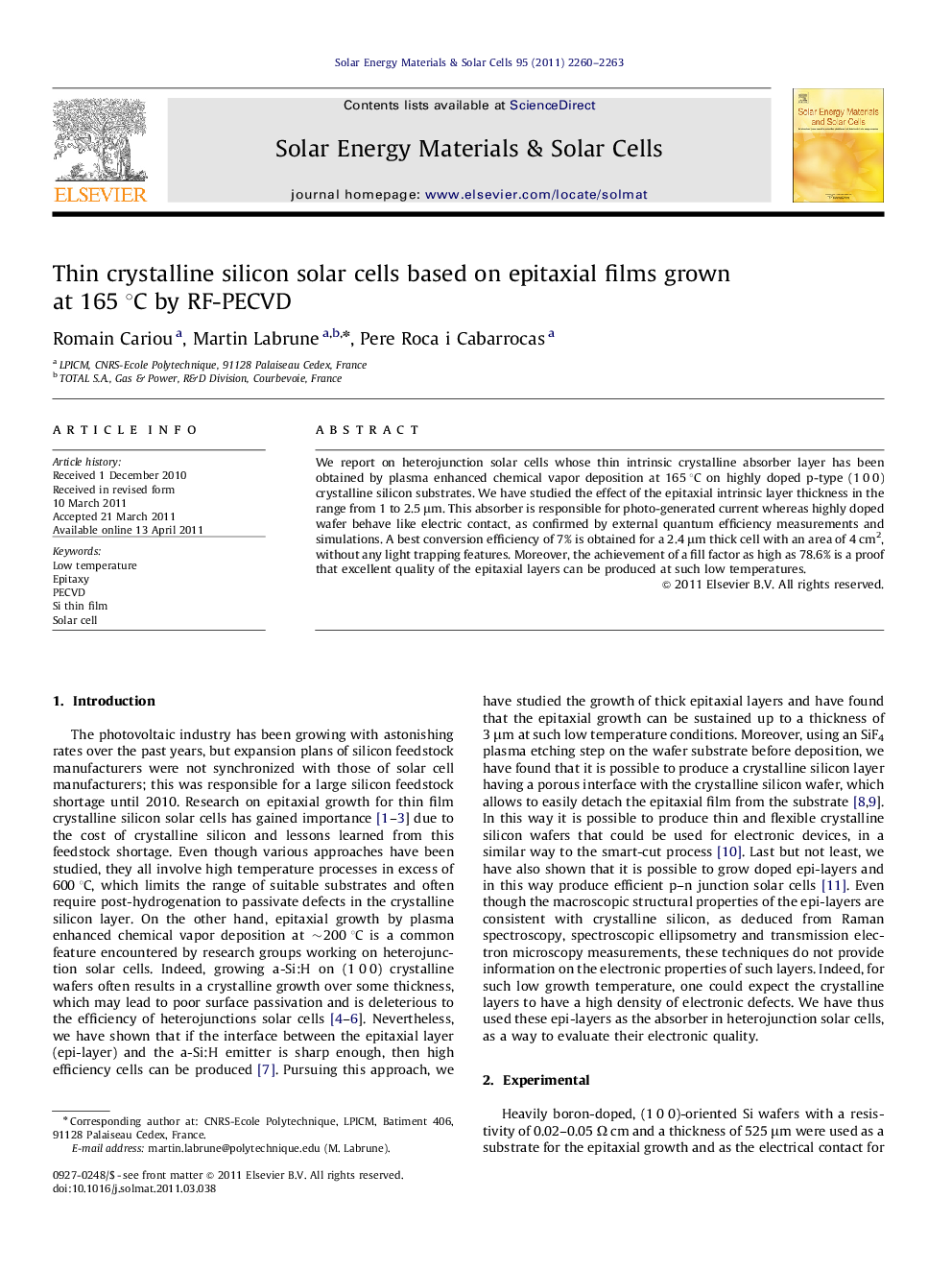| Article ID | Journal | Published Year | Pages | File Type |
|---|---|---|---|---|
| 78775 | Solar Energy Materials and Solar Cells | 2011 | 4 Pages |
We report on heterojunction solar cells whose thin intrinsic crystalline absorber layer has been obtained by plasma enhanced chemical vapor deposition at 165 °C on highly doped p-type (1 0 0) crystalline silicon substrates. We have studied the effect of the epitaxial intrinsic layer thickness in the range from 1 to 2.5 μm. This absorber is responsible for photo-generated current whereas highly doped wafer behave like electric contact, as confirmed by external quantum efficiency measurements and simulations. A best conversion efficiency of 7% is obtained for a 2.4 μm thick cell with an area of 4 cm2, without any light trapping features. Moreover, the achievement of a fill factor as high as 78.6% is a proof that excellent quality of the epitaxial layers can be produced at such low temperatures.
Graphical abstractFigure optionsDownload full-size imageDownload as PowerPoint slideHighlights► Epitaxial growth of silicon on (1 0 0) silicon by PECVD at 165 °C was demonstrated. ► p–i–n solar cells with undoped epitaxial absorber on highly boron-doped wafers were prepared. ► 7% efficiency obtained for a 2.4 μm thick absorbed epitaxial. ► High Voc and FF confirm high quality of the layers. ► PC1D modeling was in good agreement with the experimental results.
